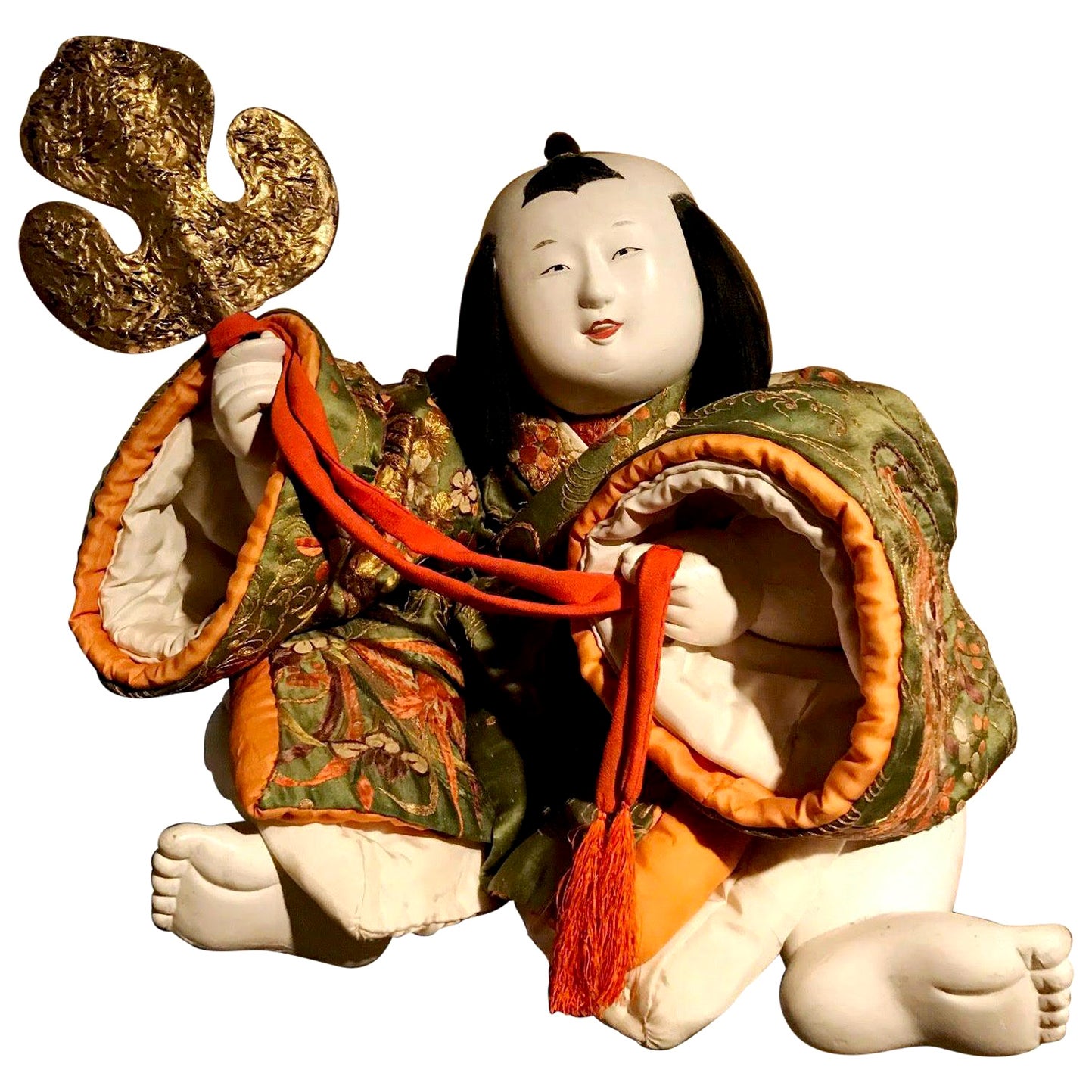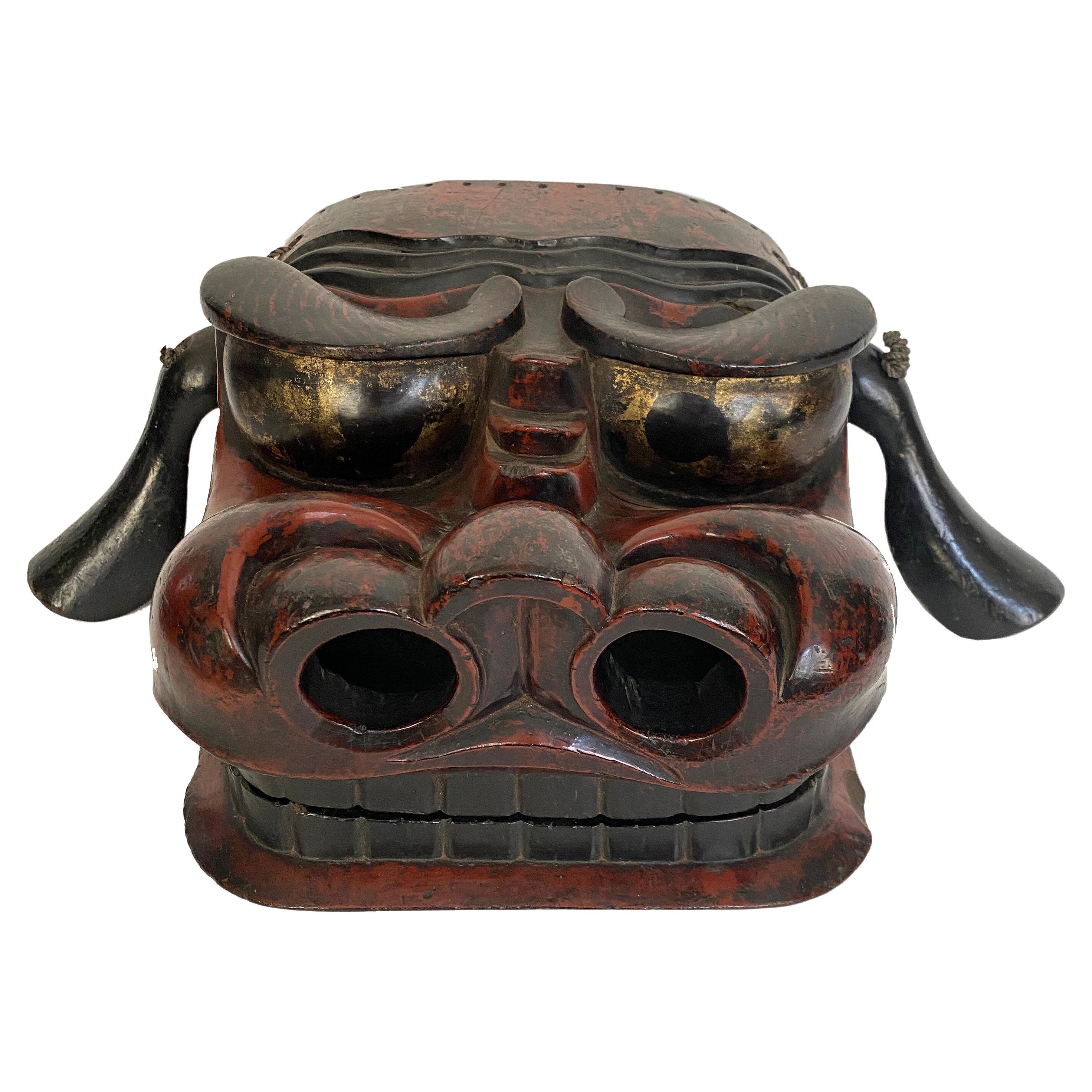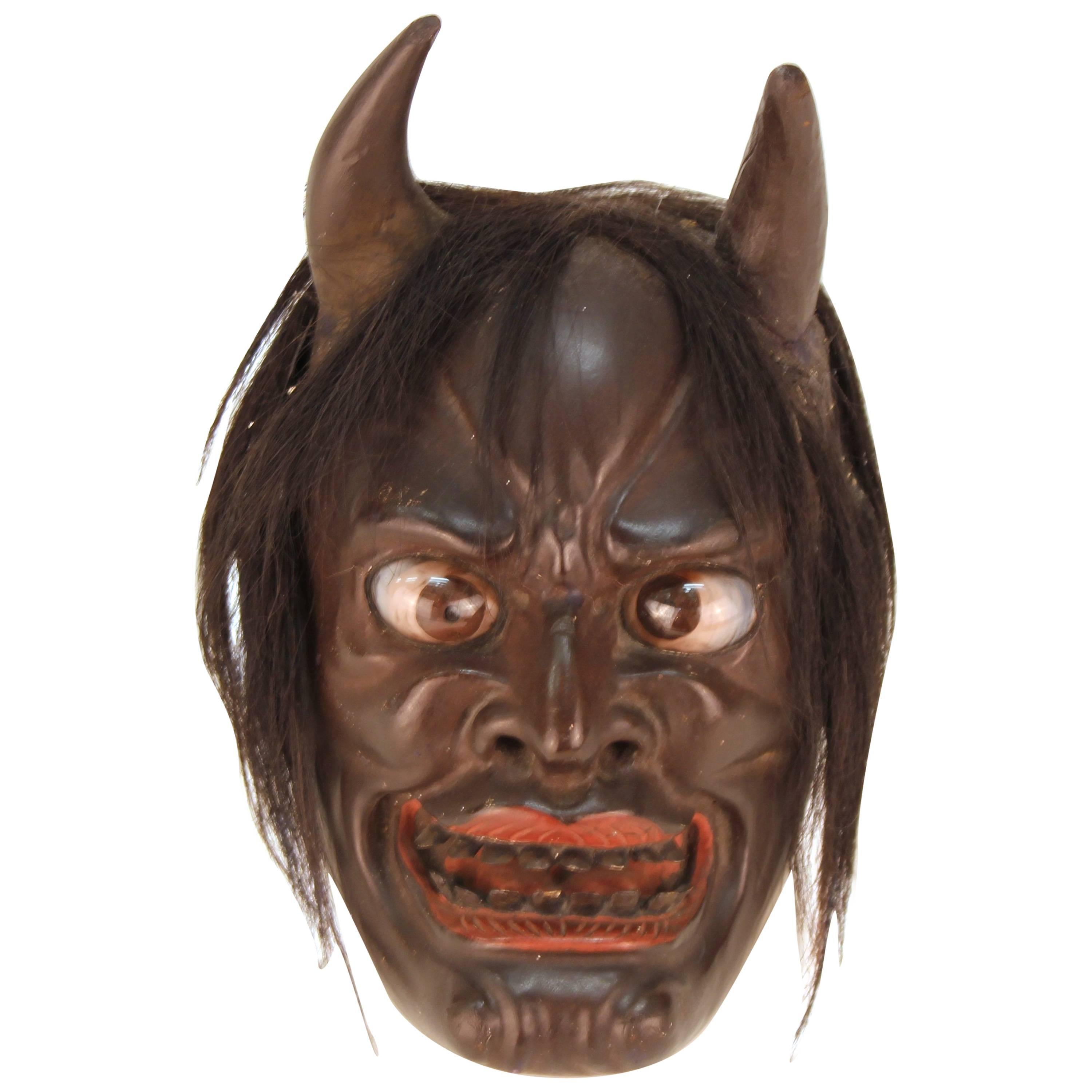Items Similar to Japanese Skeleton Boxwood Netsuke Late Edo Period
Want more images or videos?
Request additional images or videos from the seller
1 of 11
Japanese Skeleton Boxwood Netsuke Late Edo Period
About the Item
Japanese boxwood netsuke depicting a skeleton. The skeleton naturalistically carved in the foetal position in preparation for transitional burial. With excellent wear throughout from many years of use dating to circa 1840.
Notes A netsuke (??) is a miniature sculpture originating in 17th century Japan. Initially it began as a simply-carved button fastener on the cords of an inro which was later developed into ornately sculpted objects of craftsmanship.
The netsuke of excellent condition with a beautiful worn patina from nearly 200 years of use. No damages or restoration has been carried out and the skeleton figure is wholely in original condition. It does not stand upon its feet and would be displayed as per the first image laying down on its side as originally intended.
- Dimensions:Height: 2.56 in (6.5 cm)Width: 1.07 in (2.7 cm)Depth: 1.19 in (3 cm)
- Style:Edo (Of the Period)
- Materials and Techniques:
- Place of Origin:
- Period:
- Date of Manufacture:circa 1840
- Condition:Wear consistent with age and use.
- Seller Location:Newark, GB
- Reference Number:
About the Seller
5.0
Vetted Seller
These experienced sellers undergo a comprehensive evaluation by our team of in-house experts.
Established in 2019
1stDibs seller since 2022
18 sales on 1stDibs
Typical response time: 3 hours
- ShippingRetrieving quote...Ships From: Newark, United Kingdom
- Return PolicyA return for this item may be initiated within 14 days of delivery.
More From This SellerView All
- Japanese Meiji Period Koi Carp Bronze BoxLocated in Newark, EnglandJapanese meiji period mixed metal box. The box formed in a kidney shape decorated with swimming koi carp fish throughout. Each koi with intricate detailing wi...Category
Antique Early 1900s Japanese Meiji Metalwork
MaterialsMetal, Gold, Bronze
- Japanese Meiji Period Carved Wood Okimono Man with RabbitsLocated in Newark, EnglandThe charming figure, carved from a single piece of wood is exceptionally carved showing the male figure with humorous expression holding two Rabbits one by the ears and the second under his arm. A third Rabbit stands at the feet of the male looking up, each rabbit with a different expression. The male figure is wearing traditional Japanese attire with his hair tied back stood upon a naturalistic base. The figure dates to the Meiji Period (1868-1912) circa 1900. Notes The Rabbit is one of the 12 animals to feature in the Japanese Zodiac signs which follows the Chinese astrological system along with the Rat, Ox, Tiger, Rabbit, Dragon, Snake, Horse, Goat, Monkey, Rooster, Dog, Pig. Such division is connected with the Jupiter cycle around the Sun, which lasts about 12 years. As 2023 is the year of the Rabbit...Category
Antique Early 1900s Japanese Meiji Sculptures and Carvings
MaterialsWood
- Japanese Cloisonne Enamel Vase Ando CompanyBy Ando JubeiLocated in Newark, EnglandJapanese cloisonne enamel vase. The vase of ovoid form with circular opening, black enamel glaze and silver mounted rims. Boldly decorated with autumnal flowers and birds. To the top and bottom geometric patterns finish the vase. Notes Ando Cloisonné...Category
Early 20th Century Japanese Meiji Metalwork
MaterialsMetal, Silver, Enamel
- Japanese Komai Style Iron Damascene Dish by Abe ShotenLocated in Newark, EnglandJapanese Komai style iron damascene dish. The dish decorated with a landscape scene worked in gold and silver nunomezogan on a matt black ground with a ...Category
Antique Late 19th Century Japanese Meiji Metalwork
MaterialsMetal, Gold, Silver, Iron
- Japanese Bronze Pheasant Okimono Genryusai SeiyaLocated in Newark, EnglandUnusual Casting of a Pheasant in Flight From our Japanese collection, we are delighted to offer this Japanese bronze okimono of a Pheasant upon a naturalistic root wood base. The Ph...Category
Antique Late 19th Century Japanese Meiji Sculptures and Carvings
MaterialsBronze
- German Memento Mori Carved SkullLocated in Newark, EnglandAntique 18th century fruitwood carved Memento Mori Skull. The skull of petrified display powerfully carved in the form of a human skull consisting of the cranium, upper and lower jaws, the cadaverous face with deliberate missing tooth in brown wash patination throughout. Stood upon a small marble base with the skull attaching via a dowel fitting. The Skull probably from German origin. Notes From approximately the sixteenth century, skulls were commonly used to remember death as they symbolise the transience of human life. Memento Mori literal Latin translation means remember that you [have to] die. The concept has its roots in the philosophers of classical antiquity, and appeared in funeral art and architecture of the medieval period. Memento Mori jewellery...Category
Antique 18th Century German Gothic Mounted Objects
MaterialsMarble
You May Also Like
- Japanese Late Edo Period Seated Imperial Gosho Ningyo DollLocated in New York, NYJapanese rare late Edo period large Imperial Gosho Ningyo doll. The piece depicts a cute chubby child with very white skin, small limbs and big head with ...Category
Antique 19th Century Japanese Edo Sculptures and Carvings
MaterialsTextile, Silk, Wood
- Japanese Edo Period Lion MaskLocated in New York, NYA rare Edo period (17th century-18th century) Japanese lion mask for the Gion Festival. This mask was part of a two-man costume, with one man holding the mask and the other at the back covered with fabric to perform the traditional Lion Dance...Category
Antique 17th Century Japanese Edo Sculptures and Carvings
MaterialsWood
- Japanese Lion Gion Festival Dance Mask, Lacquered Wood, Late Edo periodLocated in Point Richmond, CAJapanese Lion Gion Festival Dance Mask, Lacquered wood, Late Edo period This lion mask can be found at the head of a float in the Gion festival. It is...Category
Antique 19th Century Japanese Edo Sculptures and Carvings
MaterialsWood
- Japanese Edo Period Ike Mask 'Devil Face'Located in New York, NYA Japanese sculpted wood Ike mask produced during the Edo Period (1603-1868) around 1850, depicting a devil face. Highly detailed, the mask has inserted eyes and hair attached to it.Category
Antique 1850s Japanese Edo Sculptures and Carvings
MaterialsWood
- Japanese Edo Period Kyogen Mask of a Nio GuardianLocated in New York, NYAn extremely rare Japanese Edo period Kyogen mask of a Nio guardian king, a ferocious native deity often associated with the Naga Dragon Kings, who convert...Category
Antique 19th Century Japanese Edo Sculptures and Carvings
MaterialsWood
- Japanese Edo Period Carved and Painted Wood PlaqueLocated in New York, NYJapanese Edo period carved and hand painted wood plaque for a Buddhist temple interior, with lotus blossoms, a crane and lotus leaf shelves to disp...Category
Antique 1850s Japanese Edo Sculptures and Carvings
MaterialsWood
Recently Viewed
View AllMore Ways To Browse
Late Antique Period
Used Skeleton
Restoration Period
Antique Boxwood
Antique Button Art
Ornate Carving
Japanese Wood Display
Mid Century Carved Japanese
Antique Japanese Figure
Carved Wood 19th Century Japanese
Antique Fasteners
Antique Skeleton
Carved Boxwood
17th Century Wood Carving
Wood Skeleton
Wood Skeleton Skeleton
17th Century Edo Period
Carved Japanese Figure




